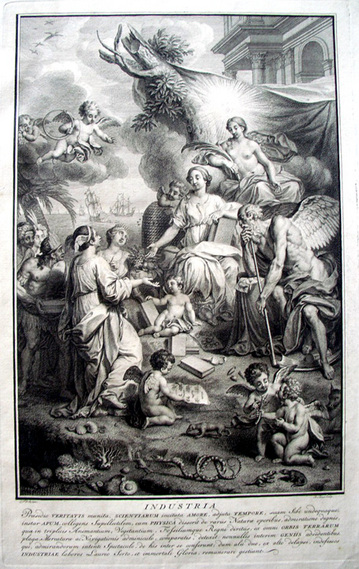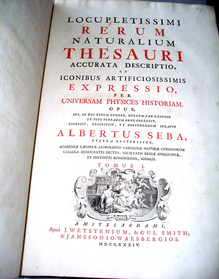The engraving seen above was found in the graphic arts collection without attribution. After some searching, Vicki Principi matched it with a spectacular thesaurus of animal specimens by the Dutch zoologist Albertus Seba. The four-volume reference work was derived from the physician’s own Cabinet of Curiosities and has been called one of the greatest natural history books ever published.
Our plate is the frontispiece for volume one, engraved by Pierre Tanje (1706-1761) after a design by the Dutch painter Louis Fabricius Dubourg (1693-1775). A quick check of Princeton University’s copy showed that the plate had not been removed from Princeton’s set and so, we now have two copies of this engraving: one bound and one unbound.
Albertus Seba collected exotic plants, snakes, birds, insects, shells, lizards and other animals. At first, these specimens were part of his profession, used to mix treatments in his pharmacy. But then, collecting grew into a personal obsession. In the early eighteenth century his entire collection was sold to Peter the Great (1672-1725) and moved to St. Petersburg, helping to establish the Russian Academy of Sciences.
For the complete set, see Albertus Seba (1665-1736), Locupletissimi Rerum Naturalium Thesauri Accurata Descriptio (Amsterdam: Wetsten, Smith, Jansson-Waesberg; 1734-65). Rare Books EX Oversize 8607.847e

